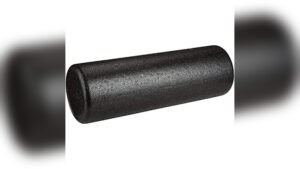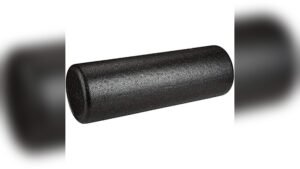An exercise mat becomes an integral partner in the realm of fitness and well-being. It’s the space where one practices yoga and performs body-weight exercises, or stretches. As one uses it regularly, the mat is subject to sweat, dirt, and even oils from our skin. Thus, cleaning and maintaining it is crucial for hygiene and ensuring the mat’s longevity. This essay provides a comprehensive guide on effectively cleaning an exercise mat.
Before exploring our tutorial, check whether the exercise mat & yoga mat are the same or not.
Table of Contents
ToggleWhy Clean Your Exercise Mat?
Understanding the Importance of Cleaning:
Regular cleaning of your exercise mat is essential for several reasons:
1. Hygiene: Sweat, dirt, and bacteria can accumulate on your mat during workouts, leading to unpleasant odors and potential skin irritations. These bacteria & germs are anti-health issues to avoid perfectly.
2. Prolonged Lifespan: Proper maintenance and cleaning can extend the lifespan of your exercise mat, saving you money in the long run.
3. Enhanced Performance: A clean mat provides better grip, stability, and comfort, enabling you to perform your exercises with confidence and efficiency.
Understanding Your Mat Type
Before diving into the cleaning process, understanding your exercise mat’s material is essential. Different materials require varied care.
1. PVC (Polyvinyl Chloride): This is the most common material for yoga and exercise mats. They are durable and can be cleaned with most mild detergents.
2. TPE (Thermoplastic Elastomer): These mats are more eco-friendly than PVC and are known for being lightweight. They require a gentler cleaning method.
3. Rubber: These mats Made from natural rubber might be sensitive to sunlight and should be cautiously cleaned.
4. Cotton: Often used for traditional yoga practices, cotton mats are machine washable.
5. Jute: These eco-friendly mats combine jute fibers with other materials. They can be a bit more abrasive but are generally easy to clean.
Based on the material type of exercise mat, you should know the cleaning techniques.
Can you wash a yoga mat?
Yes, you can wash a yoga mat, but the method depends on the mat’s material and the manufacturer’s care instructions. Here are some general guidelines:
Hand Washing:
- Fill a bathtub or large basin with lukewarm water and add a small amount of gentle detergent.
- Submerge the mat and gently scrub it with a soft cloth or sponge.
- Rinse the mat thoroughly with clean water.
- Gently wring out excess water (be careful not to twist the mat too much, as this can damage it).
Machine Washing:
- Some yoga mats, especially cotton or other fabrics, can be machine-washed.
- Use cold water and a gentle cycle with a mild detergent.
- Avoid using bleach or fabric softeners, as they degrade the mat’s material and grip.
- Do not put the mat in the dryer. Air dry it instead.
How to wash a yoga mat-the daily users?
For those who use their mat daily, a light cleaning after each session helps keep it in top condition.
Wipe Down: Use a cloth or a specialized mat wipe to quickly wipe down the mat. This removes immediate sweat and dirt.
- Allow the solution to sit for a few minutes to kill the germs effectively.
- Wipe down the mat using a soft, clean cloth to remove the excess solution.
Dry Properly:
- Letting the mat dry completely is crucial to prevent mold and mildew growth.
- Hang or lay the mat flat in a shaded area, as direct sunlight can degrade some mats.
Frequency:
- If used daily, it’s recommended to disinfect your yoga mat at least once a week.
- If used less frequently, disinfecting it every other week should suffice.
- Remember, if you’re practicing in public spaces or outdoors, you should disinfect your mat after each use.
Odor Control/ How to clean yoga mat alcohol?
To combat any lingering odors like alcohol, etc. on your exercise mat, try the following methods:
1. Vinegar Solution: Mix water and white vinegar in a spray bottle to clean the mat. Spray the solution on the mat’s surface, wait a few minutes, and then wipe it with a damp cloth. The vinegar naturally neutralizes odors.
2. Essential Oils: To make your mat smell nice, put a few drops of your favorite essential oil (like tea tree or lavender) into a spray bottle filled with water. Gently spray the mixture on your mat for a refreshing scent.
Storage and Maintenance
Proper storage and maintenance practices can help keep your exercise mat clean for longer:
1. Roll It Up: Store your mat by rolling it up rather than folding it. This prevents creases and prolongs the mat’s lifespan.
2. Ventilation: Choose a well-ventilated storage area to prevent mold or mildew growth.
3. Avoid Moisture: Keep your exercise mat away from damp or humid environments to prevent bacterial growth.
How to clean a yoga mat at home? Deep Cleaning techniques
Perform a deep cleaning of your exercise mat at least once a month or whenever it becomes visibly dirty. Follow these steps:
1. Prepare a Cleaning Solution: Create a solution by mixing mild soap or detergent with warm water in a bucket or spray bottleCleaning your exercise mat with harsh chemicals or bleach can damage its surface, so it’s best to avoid them. Instead, choose milder cleaning solutions or eco-friendly alternatives. This deep clean yoga mat will help maintain the mat’s longevity and integrity over time.
2. Scrub Gently: To clean your exercise mat, get a soft sponge or cloth and dip it into the cleaning solution. Gently scrub the surface of the mat with a sponge or cloth. This method ensures a thorough and gentle cleaning process for your mat. Pay attention to any heavily soiled areas. Avoid excessive scrubbing, which may damage the mat’s texture or integrity.
3. Thoroughly Rinse the mat with clean water to remove any soap residue. Ensure all the soap is thoroughly washed away.
4. Dry Properly: To dry your exercise mat properly, either lay it flat or hang it on a clothesline. It’s important to keep your mat in good condition by avoiding direct sunlight or high heat. This precaution will help preserve the quality and longevity of your mat. This is because such exposure can lead to warping or deterioration. By following these precautions, you can ensure that your mat remains in optimal shape.
Check the Manufacturer’s Instructions
Before cleaning your exercise mat, it is essential to check the manufacturer’s instructions. Different mats may have specific cleaning requirements based on the materials as I stated above (such as rubber, PVC, or foam). Adhering to the manufacturer’s guidelines ensures you do not damage the mat during cleaning. Yoga mat cleaning spray certainly washes your mat.
How to disinfect a yoga mat?
Disinfecting your yoga mat is essential to ensure it remains free from harmful bacteria and germs, especially if used frequently or in shared spaces. Here’s a concise guide on how to disinfect your yoga mat:
Materials Needed:
- A spray bottle
- Distilled water
- White vinegar or witch hazel (natural disinfectants)
- Essential oils (e.g., tea tree or lavender for their antibacterial properties and pleasant scent)
Preparation of Disinfectant Solution:
- Fill the spray bottle with one part distilled water and one part white vinegar or witch hazel.
- Add a few drops of essential oil for fragrance and added disinfecting properties.
Spray and Wipe:
- Lay out your yoga mat on a flat surface.
- Spray the disinfectant solution generously across the entire surface.







